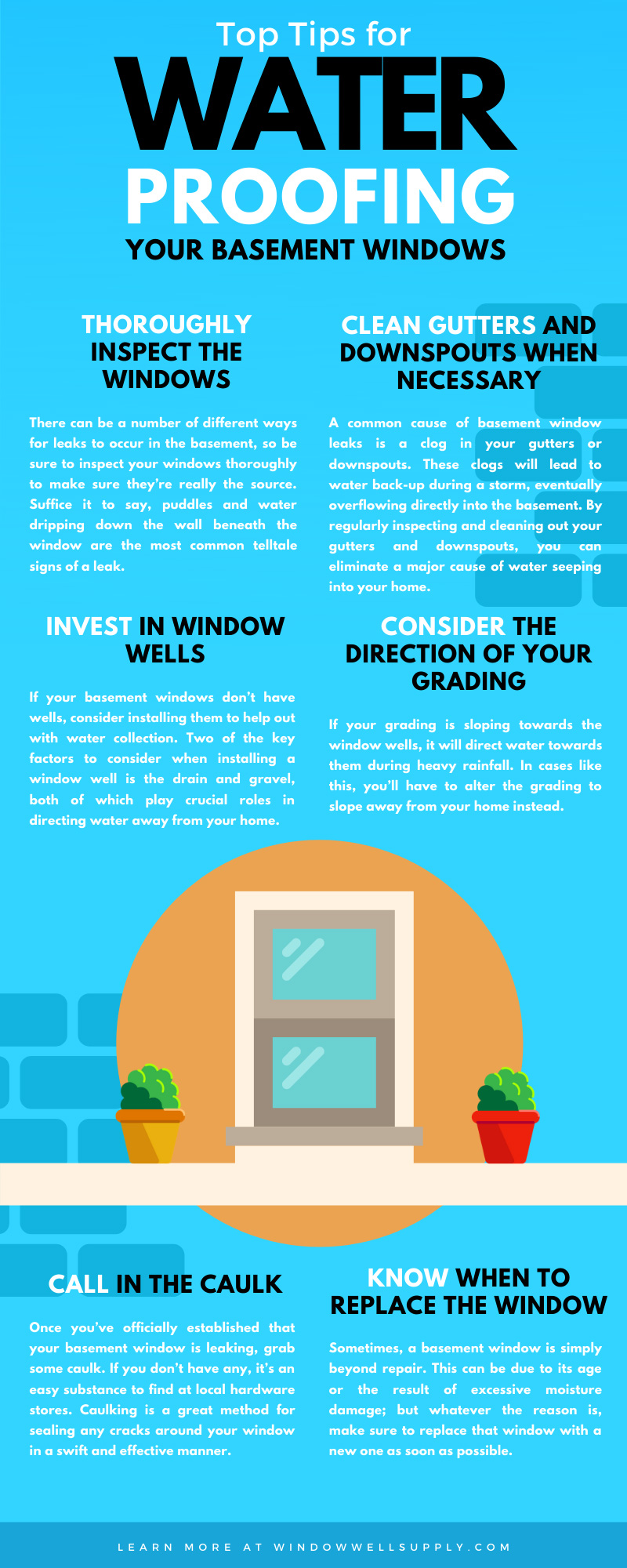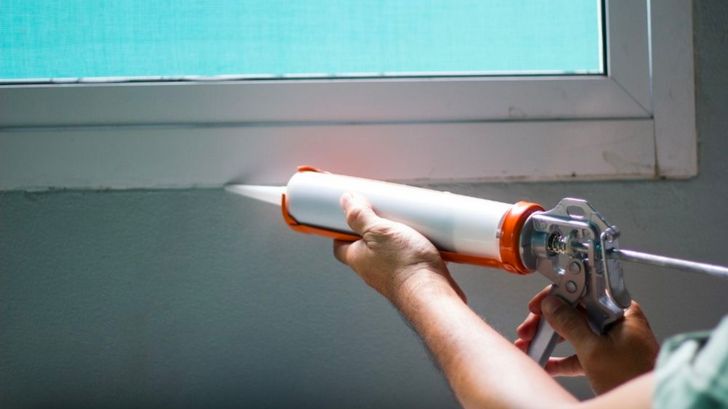Basement windows are a great tool for bringing natural light and a warm atmosphere to an area of the house that’s commonly dark and cluttered. As great as those windows are, you have to be on the lookout for problems like water seeping through into your home.
Leaks can seem like a small problem at first but will become a much bigger issue the longer you allow them to occur. To prevent that from happening, always keep these top tips for waterproofing your basement windows in mind after the initial installation.
Thoroughly Inspect the Windows
There can be a number of different ways for leaks to occur in the basement, so be sure to inspect your windows thoroughly to make sure they’re really the source. Suffice it to say, puddles and water dripping down the wall beneath the window are the most common telltale signs of a leak.
That being said, there are a few other key pieces of evidence that will point towards a leak. Keep an eye out for mold, stains, and fading paint surrounding the window. If you spot any of these issues, the most likely culprit is a leak.
Call in the Caulk
Once you’ve officially established that your basement window is leaking, grab some caulk. If you don’t have any, it’s an easy substance to find at local hardware stores. Caulking is a great method for sealing any cracks around your window in a swift and effective manner.
However, depending on how long that leak has been occurring, there might be some additional damage to the window frame that will need some repairs as well. This is why it’s helpful to inspect basement windows after heavy rainfall. By doing that periodically, you can spot and fix leaks as soon as possible, thus reducing the damage they wreak on your home. These basement waterproofing tips are easy to implement and can save you from costly water damage down the line.
Invest in Window Wells
If your basement windows don’t have wells, consider installing them to help out with water collection. That being said, even with window wells in place, leaks can still occur. Two of the key factors to consider when installing a window well is the drain and gravel, both of which play crucial roles in directing water away from your home. In order to help those components do their job, install heavy-duty window well covers. A high-quality cover is the best tool for keeping rain, snow, and other debris from making their way into the wells in the first place. Proper waterproofing for basement windows often starts with durable window wells and secure covers.
If you ever notice that your drainage system is not quite working properly, inspect it and the surrounding gravel. Covers are great at keeping debris out of the window well, but if you don’t have a cover, dirt, leaves, and other obstructions can clog up the drain, resulting in homeowners having to remove them. If the drain’s not the problem, inspect your gravel.
The gravel isn’t just there to look nice. In fact, it plays a key role in allowing water to properly drain. So, if you notice your gravel is muddy or otherwise gunked-up, you can remove it and wash it to fix the issue. On the other hand, you can remove the gravel and replace it with a fresh batch. Either choice is an effective means of improving your drainage quality.
Consider the Direction of Your Grading
Even if you consider the factors mentioned above regarding window wells, there is still something that can cause issues—your property’s grade. If you’re unfamiliar with what grading is, it’s essentially a way of describing the land elevation around your home. If your grading is sloping towards the window wells, it will direct water towards them during heavy rainfall. In cases like this, you’ll have to alter the grading to slope away from your home instead.
Unfortunately, even if you’re a DIY kind of homeowner, this isn’t something you’ll be able to accomplish on your own. If grading is the cause of your leaks, reach out to a professional who can inspect your property and make the right adjustments to fix the issue.
Clean Gutters and Downspouts When Necessary
Sometimes, the big culprit behind the window leak isn’t the window itself but something above it instead. We’re not talking about the clouds that bring the rain, although they don’t help the issue very much either.
A common cause of basement window leaks is a clog in your gutters or downspouts. These clogs will lead to water back-up during a storm, eventually overflowing directly into the basement. By regularly inspecting and cleaning out your gutters and downspouts, you can eliminate a major cause of water seeping into your home.
Know When To Replace the Window
Sometimes, a basement window is simply beyond repair. This can be due to its age or the result of excessive moisture damage; but whatever the reason is, make sure to replace that window with a new one as soon as possible. The best way to tell whether or not it’s time for a replacement is if the methods above have not been able to make a difference.
If you try all of the tips above and yet the window continues to allow water to seep in, then think about replacing it. While this might sound frustrating, replacing the window gives you the opportunity to make some good upgrades. For instance, if you have yet to transform the window into a well or an emergency egress, a situation like a total replacement is the perfect time to do so.
Although leaks can be a dire detriment to homes, these top tips for waterproofing your basement windows will help homeowners prevent mold growth and other forms of damage from occurring. The key to fixing these leaks before they can do major harm is simply not being neglectful. If you’re not keeping an eye on the quality of your home, from the basement to the roof, small issues can balloon into larger ones without you even knowing.
Likewise, putting off fixing such issues will do more harm than help as well. On the other hand, if you’re a vigilant homeowner who watches over their property carefully and acts swiftly in the face of any issue, you can keep the place looking stunning and, most importantly, intact all year round.


 Lifetime Warranty On All WWS Covers
Lifetime Warranty On All WWS Covers
 Free Shipping On All Products
Free Shipping On All Products





 (262) 633-3707
(262) 633-3707

 info@windowwellsupply.com
info@windowwellsupply.com
